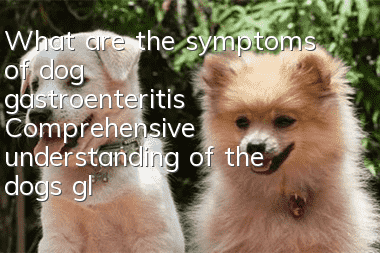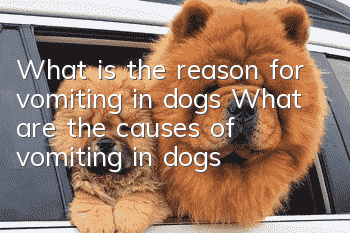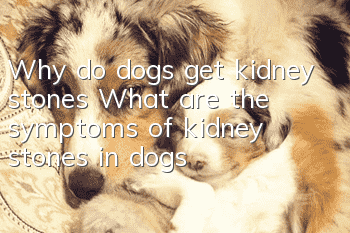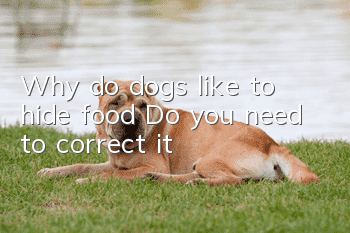What are the symptoms of dog gastroenteritis? Comprehensive understanding of the dog’s glass stomach

Dog gastroenteritis symptoms and treatment
Symptoms
Diarrhea, vomiting, digestive disorders, food intolerance , anorexia, digestive system disorders, etc. The most common symptoms are vomiting and diarrhea, and these two symptoms are easily ignored by parents. Because some parents do not know enough about the early symptoms of the disease, the dog's condition worsens, causing the dog to become emaciated, have bloody stools, and even become life-threatening.
1. Diarrhea and vomiting are relatively common in dogs. Diarrhea is caused by accelerated intestinal peristalsis, increased intestinal mucosal secretion and malabsorption. It is more common in intestinal diseases. Diarrhea is characterized by the discharge of unshaped or liquid feces and is a symptom of many diseases. Diarrhea in dog babies often leads to dehydration and death, so the disease must be treated as soon as possible when the disease is discovered.
2. There are many factors that cause gastrointestinal discomfort in dogs. For example, when dogs go out for walks and play games, they sometimes accidentally eat eggs exposed to the environment, and these eggs can become parasitic on the dog; or dogs accidentally eat moldy and rotten food. , accidentally swallowing foreign objects. Or long-term antibiotic use, intestinal flora imbalance, increase in harmful bacteria, intestinal infection or camping. Malnutrition can lead to gastrointestinal distress.
Prevention
It is very important for dogs to eat small meals frequently. Feeding too much at one time will suddenly increase the burden on the dog’s stomach and easily cause indigestion. ,Vomit. If possible, adult dogs were fed twice a day, and before 5 months old, they were fed three times a day. If you cannot ensure that the dog is fed on time, you must also control the amount each time. You cannot give it a day's food at once. Hungry It is better for the dog's stomach than eating to fill up the stomach. Parents should pay attention to feeding dry and hard food as little as possible, which is difficult for dogs with poor stomach to digest.
Avoid foods that cause gastrointestinal discomfort in dogs
1. Seafood: shrimp, crab, cuttlefish, octopus, jellyfish, etc. Dogs are prone to indigestion after eating them
2. Do not feed chicken bones to dogs. Chicken bones are relatively brittle and turn into small pieces after being chewed. The tips of the small pieces are particularly sharp and can easily scratch the stomach and intestines if the dog swallows them.
3. Cauliflower can cause diarrhea in dogs
4. Peas, broad beans, soybeans, etc. contain alkaloids and are prone to flatulence after eating
5. Almonds, melon seeds, sesame seeds and nuts are not easy for dogs to digest
6. Coffee, tea, chocolate, etc. contain substances that can cause nerve, heart, and gastrointestinal poisoning. Remember not to let dogs eat them
7. Excessive consumption of almonds, peaches, wild berries, bitter melons, plums, prunes, and mushrooms can cause dysentery, vomiting, and lower abdominal pain.
8. High-fat food: It will increase the burden on the digestive system. Some special breeds, such as Schnauzers and Dachshunds, can easily induce pancreatitis due to high-fat food.
Causes of gastrointestinal discomfort in dogs
Too much food: Dogs are very hungry animals, so if they eat too much, it can cause discomfort and vomiting. When a dog vomits, the vomiting state should be observed. Most esophageal problems occur if there is foam and stickiness. If necessary, you can send some samples to the hospital for examination.
Rumination (commonly known as cud chewing): Dogs can also ruminate. This is because dogs usually eat by swallowing and do not chew carefully, so they will spit out the food they have eaten, and then Eat it right back. This kind of vomiting is physiological vomiting. The dog will be fine. Parents don’t need to panic!
Acute gastritis: If the dog's vomit is transparent or white, it means that the vomited gastric juice is gastric juice. This type of vomiting is most common in dogs with acute gastritis. However, if the dog has no other symptoms after vomiting, don’t worry, just fast for 12 hours. If there are other reactions, go to the hospital for a comprehensive examination.
Gastrointestinal ulcers: If the dog's vomit is yellow-green, it means that the dog's vomit is bile. If this happens, seek medical attention. There are many problems with vomiting bile, which cannot be judged from the surface. In addition to problems with the liver, kidneys and pancreas, ulcers in the gastrointestinal tract may also be a problem.
Diet: Dog gastrointestinal problems are definitely related to diet. After eating too much greasy food, the dog's poop is likely to be loose and soft. After eating bones, the dog's poop is likely to be dry and hard. Fruits and vegetables can easily cause the dog to have loose stools. A diet based on dog food is relatively healthy for dogs, but there are many types of dog food, and some have poor nutritional content. Long-term consumption of this kind of dog food may cause it to be deficient in certain aspects of nutrition. It is recommended that you buy better dog food for your dog and change brands from time to time. When changing dog food, don't change it all at once. Gradually increase the proportion of new dog food with each meal so that the dog's stomach can slowly adapt. (Follow the principle of changing food within seven days)
Bleeding: If your dog vomits bright red stuff, don’t hesitate and send it to the hospital for treatment immediately. This is an acute hemorrhagic symptom!
The process of dogs digesting food
Dogs have a very strong ability to digest food. Their stomachs are irregular pear-shaped, and the hydrochloric acid content in their gastric juices is as high as 0.4%~ 0.6%. Hydrochloric acid swells proteins, making them easier to break down and digest. Therefore, dogs have a strong ability to digest high-protein foods, which is also an evolved characteristic of carnivores. Dogs may empty all the food in their stomachs 5 to 7 hours after eating, which is much faster than other herbivores or omnivores. Moreover, dogs have a large stomach capacity and a relatively short digestive tract, so food is stored in the stomach. Digestion begins in the intestines, but most food still occurs in the intestines. Dogs have thick intestinal walls and relatively strong absorptive capacity.
The process of dogs digesting food
Dogs have a very strong ability to digest food , its stomach is irregular pear-shaped, and the content of hydrochloric acid in the gastric juice is as high as 0.4%~0.6%. Hydrochloric acid can expand protein, making it easier to break down and digest. Therefore, dogs have a strong ability to digest high-protein foods, which is also the reason for carnivores. An evolved characteristic. Dogs can empty all the food in their stomachs 5 to 7 hours after eating, which is much faster than other herbivores or omnivores. Moreover, dogs have a larger stomach capacity than their digestive tract. Short, food begins to be digested in the stomach, but most food is still processed in the intestines. Dogs’ intestinal walls are thick and their absorption capacity is relatively strong.
- What does whole dog food mean? Can puppies eat whole dog food?
- What to do if Bichon Frize has diarrhea? Is it dog plague?
- What to do if a puppy has diarrhea? What causes diarrhea in a puppy?
- What kind of human food can dogs eat? These 10 foods can be used to give dogs extra meals
- How many types of shepherd dogs are there? A huge family tree of shepherds with high IQs.
- Why small dogs live longer than large dogs What causes longer lifespan
- How to judge whether a VIP is pure or not? Look at this!
- How to treat dogs suffering from canine distemper Home treatment methods for canine distemper
- What’s wrong with dogs having postpartum convulsions? Don’t take postpartum convulsions lightly.
- What does it look like if Schnauzer has a skin disease? If you want to get better quickly, don’t blindly treat it on your own



